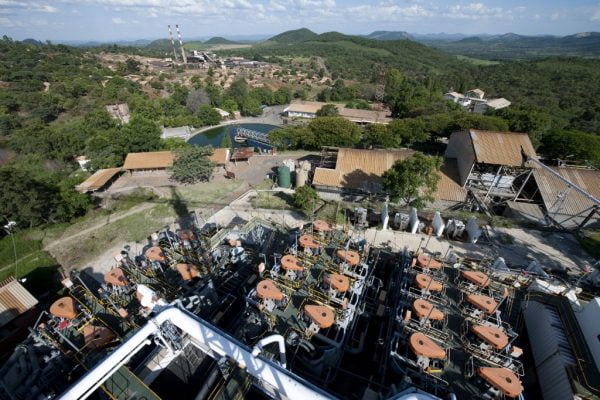BNC records growth in mined nickel

Bindura Nickel Corporation (BNC) says tonnes of nickel mined for the year ended March 31, 2022 increased 13 percent to 463,338 from 412,605 tonnes the previous year largely driven by on-going development projects.
BNC which is engaged in the mining and extraction of nickel and production of nickel byproducts had its shares delisted from the ZSE on December 15, 2021 and became the fourth company to be listed on the USD-denominated stock exchange VFEX on the 17th of the same month.
Muchadeyi Masunda, the group’s chairman, in statement of the financials said that commissioning of the Re-deep and Tie-in project was delayed by nearly one month, due to unforeseen technical challenges, resulting in only 4 days of production in April 2021.
“The project was, however, successfully completed and resulted in the intended benefits of reduced ore tramming distances, elimination of double handling and provision of access to deeper-lying mineral resources being achieved,” he said.
Masunda noted that the changes in the massive resource footprint, coupled with the need to optimise the extraction of the entire mineral resource, necessitated the pre-planned transition from the low-volume, high-grade strategy to the new high-volume, low-grade strategy.
“As a result, the combined effect of the above factors led to tonnes ore mined for the year totalling 463,338, which was 13 percent higher than the previous year’s 412,605 tonnes,” said Masunda.
He added that tonnes ore milled of 461,130 were 12 percent higher than last year’s tonnage of 411,754, in tandem with the higher tonnage mined.
“In line with the new strategy, head grade declined to 1,30 percent from 1,52 percent for the prior year while recovery efficiency was 85,0 percent versus 85,9 percent for last year.
“Consequently, Nickel in concentrate production declined by five percent to 5,082 tonnes from the previous year’s 5,363 tonnes,” said Masunda.
He noted that the aged and obsolete underground mining mobile equipment resulted in poor and inconsistent availability during the year under review and thus compromised production.
In addition, he said that the significant challenges associated with changes in the massive ore body footprint were experienced in September and October 2021.
During the period under review, unit cash cost of production (C1) increased by 43 percent to US$10,749 per tonne while the all-in-sustaining cost of production increased by 45 percent from US$8,552 per tonne for the prior year, to US$12,396 per tonne.
Masunda said that the increase in unit production cost was mainly due to the decrease in Nickel production and the high cost of maintaining the old and obsolete underground mining mobile equipment.
He said that the disparity between the official auction and parallel market rates continued to widen during the year.
“With local suppliers using the parallel market rates rather than the auction rates in their pricing models, the discrepancy in the two rates had an adverse impact on the Company’s costs of local inputs,” he said.
According to Masunda, nickel sold for the year, amounted to 4,720 tonnes, 14 percent lower than prior year sales of 5,496 tonnes, reflecting the lower Nickel production.
He said that the Company’s off-take contract expired in early March 2022, after requisite contracted
Nickel concentrates had been delivered while deliveries under the old contract were completed on 9 March 2022.
“Finalisation of a new two-year contract for the supply of 100,000 tonnes of Nickel concentrates took longer than anticipated.
“The contract was only signed and approved by the relevant regulatory authorities at the end of April 2022. Deliveries under the new contract commenced on May 2, 2022,” said Masunda.
During the period under review, the group’s capital expenditure amounted to US$6.5 million lower than US$8.9 million in 2021.
Masunda said subject to funding, being available, the programme to replace the old and unreliable underground mining mobile equipment is expected to take at least two years to complete and the programme will be funded from a mix of internal cash flows and external loans.


